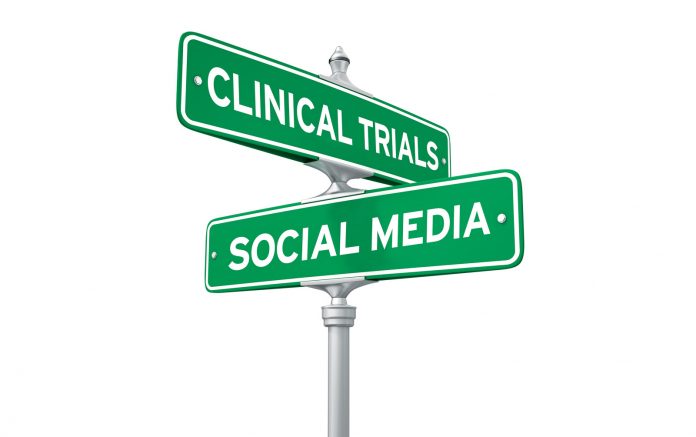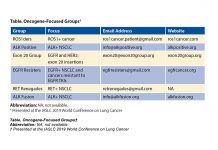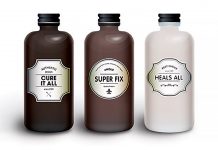By DR Camidge
Posted: March 1, 2019
The National Cancer Institute featured a workshop in June 2018 titled “At the Crossroads of Social Media and Clinical Trials: A Workshop on the Future of Clinician, Patient, and Community Engagement.” The two-day conference brought together key stakeholders in this area including clinical trialists, internet researchers, patient navigators, advocates, and communication experts.
The viral spread of videos related to the “ALS Ice-Bucket Challenge,” in which individuals dumped a bucket of ice water over their heads and then tagged friends on social media as a way to fundraise for research, represents a prominent example of how a social media campaign can work to raise awareness of medical issues. However, creating a social media presence to generate free marketing for an idea, a person, institution, or project— such as an actively recruiting clinical trial—is frequently referred to as being “like given a free puppy.” Just as the puppy needs constant attention, so does a social media presence. To effectively create a go-to spot for information, optimal use of social media requires more effort than maintaining a website or engaging in email. Instead, it’s more akin to engaging in a constant conversation with a community consisting of multiple participants and observers.
“In the end, it’s about meeting people where they are,” said Yasmin Kloth, manager of the National Institute of Health’s All of Us Research Program’s social media program.
Clinical Trials: Social Media’s Potential for Value and Harm
In addition to being a means for healthcare professional outreach to patients, the conference discussed how patients themselves are also using social media to educate one another about new developments, including the pros and cons of ongoing trials. Without social media, some patients on clinical trials do not know what questions to ask their doctors or what the most useful resources are for caregiver information. At the very least, they might struggle to find a hotel or the best place to eat in a new city. More importantly, it is unknown whether a patient’s personal experiences in a trial, as discussed on social media, might mislead other potential participants or data might be prematurely revealed through discussion of these experiences. The patient-consenting process for trials was proposed as an ideal setting in which to ask trial participants to refrain from discussion on social media. However, several patients at the conference emphasized their right to freedom of expression.
“Social media isn’t going away. It’s the trials’ process, not the patients who should adapt,” said Gilles Frydman, founder of the Association of Cancer Online Resources and co-founder of Smart Patients, Inc.
Certainly, trial patients can be requested to limit their public posts at the time of informed consent. Increasing community awareness that any individual source may be subject to implicit bias may be the better way to address this issue over time.
Plain and Simple Talk
The lack of user friendliness of some internet sites (notably clincialtrials.gov) and the lack of plain language that is easily comprehended by a non-specialist audience was repeatedly mentioned during the conference. Although social media could facilitate accrual, retention, and better adherence to follow-up schedules for a specific trial, there is a fine line in this setting between increasing awareness and coercion. In addition, it is unclear how investigational review boards, which previously have had to approve language used in patient-facing materials such as consent forms, should address trial-specific social media with every immediate interaction visible, potentially forever, in the public domain. One suggestion was to have broad plain-language templates approved in advance, with the specific words used on any given day being less important.
“Social media is organic and responsive—our old ideas of a fixed script or set of words vetted to be presented to a patient in a paper consent form do not fit well with social media interaction. [Investigational review boards] in general are still grappling with best oversight practices for recruitment or other research activities conducted over social media,” said Luke Gelinas, chair of the Advarra IRB, and one of the speakers at the conference.
Overall, the potential of social media to change aspects of clinical trials dramatically was clear in the conference. Equally clear was that, as with anything new, nothing is ever simple. A considerable amount of work is ongoing to understand the best way to marry the use of social media and trial promotion going forward.
Conducting Trials Through Social Media
Conduct of meaningful research directly though social media appears very attractive given the potential for industrial-strength data to be generated. However, a Centers for Disease Control (CDC) study relating to the lifestyle habits of young LGBTQ people revealed the underlying complexities with this approach. In the study, choice of the right social media platform was vital, with participants’ favorite platforms varying by study population. Facebook and Twitter might be the most well-known platforms, but they are by no means the only forms of social media being used.
“If social media is used appropriately, it can be a cost-effective way to connect with otherwise hard-to-reach groups,” said Erin Fordyce, research methodologist at NORC at the University of Chicago, which helped coordinate the LGBTQ study with the Centers for Disease Control’s Division of Adolescent and School Health.
The study also highlighted the importance of recognizing the inherent bias present in any responders. Only a proportion of potential trial participants will be on social media, only a proportion will be using the specific platform involved in the trial, and only a proportion of those will choose to respond. Multiple tricks exist to ensure respondents are genuine and that multiple responders are in fact different people. In the former situation, responses that are uniform in their approach, such as all the first response or all responses as “don’t know” should be discounted. Device identification methodologies also can be used to prove uniqueness or individual existence of respondents.
Crowd-Sourcing a Clinical Trial
For rare diseases, where a single center could never encounter enough examples of cases, social media offers the potential to reach out in a manner unrestricted by geography. A study conducted by PatientsLikeMe and Duke University for ALS revealed the huge potential for social media in this regard. Following a small published case report that had suggested benefit from a dietary supplement, PatientsLikeMe facilitated a virtual trial where patients gained access to the supplement themselves and then centrally cataloged their own experiences through Duke. This study showed no evidence of benefit from the supplement and reported results earlier and more cost effectively than an NIH-sponsored study, which showed the same result.
“Our ALS trial shows what the creative use of social media can achieve in terms of bringing the clinical trial paradigm into the 21st century,” said Paul Wicks, vice president of Innovation at PatientsLikeMe. “It’s easy to imagine that in the future, these approaches will
be used more and more.” ✦











